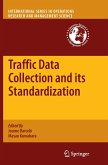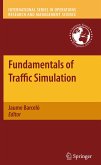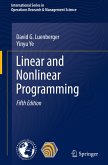The increasing power of computer technologies, the evolution of software en- neering and the advent of the intelligent transport systems has prompted traf c simulation to become one of the most used approaches for traf c analysis in s- port of the design and evaluation of traf c systems. The ability of traf c simulation to emulate the time variability of traf c phenomena makes it a unique tool for capturing the complexity of traf c systems. In recent years, traf c simulation - and namely microscopic traf c simulation - has moved from the academic to the professional world. A wide variety of traf- c simulation software is currently available on the market and it is utilized by thousands of users, consultants, researchers and public agencies. Microscopic traf c simulation based on the emulation of traf c ows from the dynamics of individual vehicles is becoming one the most attractive approaches. However, traf c simulation still lacks a uni ed treatment. Dozens of papers on theory and applications are published in scienti c journals every year. A search of simulation-related papers and workshops through the proceedings of the last annual TRB meetings would support this assertion, as would a review of the minutes from speci cally dedicated meetings such as the International Symposiums on Traf c Simulation (Yokohama, 2002; Lausanne, 2006; Brisbane, 2008) or the International Workshops on Traf c Modeling and Simulation (Tucson, 2001; Barcelona, 2003; Sedona, 2005; Graz 2008). Yet, the only comprehensive treatment of the subject to be found so far is in the user's manuals of various software products.
From the reviews:
"This book presents a comprehensive review of some of the most popular traffic simulation packages used in practice and in academia around the world. ... an impressive collection and review of existing traffic simulation packages. ... a valuable resource for transport researchers in both academic and industrial sectors. ... the book attractive to readers from both the academic and the industrial sectors. ... In conclusion, this book is an outstanding review of traffic simulation ... ." (Andy Chow, Environment and Planning B: Planning and Design, Vol. 38, 2011)
"Fundamentals of Traffic Simulation presents the state of the art in traffic simulation in a useful and practical manner. ... This book will be useful for practitioners, students, and researchers. ... can serve as an introduction to traffic simulation, as a vehicle for selecting among the various tools, and as a comprehensive guide to current traffic simulation tools. A copy should be present in the libraries of every university's civil engineering department and of every traffic consultancy team." (Christine Buisson, Interfaces, Vol. 42 (5), September-October, 2012)
"This book presents a comprehensive review of some of the most popular traffic simulation packages used in practice and in academia around the world. ... an impressive collection and review of existing traffic simulation packages. ... a valuable resource for transport researchers in both academic and industrial sectors. ... the book attractive to readers from both the academic and the industrial sectors. ... In conclusion, this book is an outstanding review of traffic simulation ... ." (Andy Chow, Environment and Planning B: Planning and Design, Vol. 38, 2011)
"Fundamentals of Traffic Simulation presents the state of the art in traffic simulation in a useful and practical manner. ... This book will be useful for practitioners, students, and researchers. ... can serve as an introduction to traffic simulation, as a vehicle for selecting among the various tools, and as a comprehensive guide to current traffic simulation tools. A copy should be present in the libraries of every university's civil engineering department and of every traffic consultancy team." (Christine Buisson, Interfaces, Vol. 42 (5), September-October, 2012)








